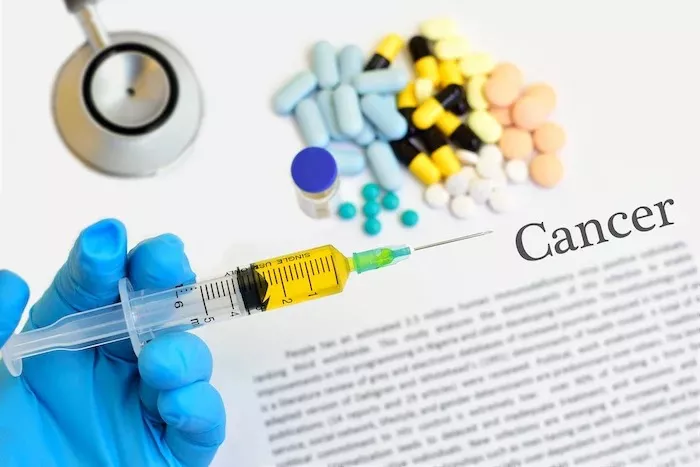Scar tissue, a natural part of the body’s healing process, can sometimes pose challenges due to its structural and functional differences from the surrounding tissue. In recent years, the role of stem cells in regenerative medicine has sparked interest and optimism regarding their ability to repair and remodel scar tissue. This article delves into the fascinating realm of stem cells and their potential to address scar tissue, examining the current state of research, clinical applications, and the future possibilities of harnessing the power of stem cells for scar tissue repair.
The Nature of Scars: Understanding Scar Tissue Formation
Before delving into the potential role of stem cells in scar tissue repair, it’s essential to understand how scars form. When the skin undergoes injury or trauma, the body initiates a healing process that involves the formation of scar tissue. Unlike normal tissue, scar tissue is composed of collagen fibers arranged in a different pattern, leading to its distinct appearance and properties. While this natural response is crucial for wound closure, it can sometimes result in functional limitations and cosmetic concerns, prompting the exploration of innovative approaches like stem cell therapy.
Stem Cells: Nature’s Architects of Regeneration
Stem cells, often referred to as the body’s master cells, have the remarkable ability to differentiate into various cell types and contribute to the renewal and repair of damaged tissues. There are different types of stem cells, including embryonic stem cells, induced pluripotent stem cells (iPSCs), and adult or somatic stem cells. These cells hold immense promise in regenerative medicine due to their unique properties, making them a potential ally in addressing the challenges posed by scar tissue.
The Mechanism of Action: How Stem Cells Interact with Scar Tissue
Research suggests that stem cells may play a multifaceted role in addressing scar tissue. One mechanism involves the differentiation of stem cells into specific cell types that are needed for tissue repair. Stem cells can potentially transform into fibroblasts, the cells responsible for producing collagen, aiding in the remodeling of scar tissue. Additionally, stem cells may release signaling molecules, known as paracrine factors, which modulate the inflammatory response and promote a more favorable environment for tissue regeneration. Understanding these mechanisms provides valuable insights into how stem cells could be harnessed to influence the dynamics of scar tissue.
Promise in Preclinical Studies: Stem Cells and Scar Tissue Regeneration
Preclinical studies, often conducted in laboratory settings and animal models, have provided encouraging evidence of the potential of stem cells in scar tissue regeneration. These studies explore the impact of stem cell therapy on various types of scars, including those resulting from burns, surgical procedures, and traumatic injuries. Research indicates that stem cells have the capacity to enhance tissue regeneration, modulate inflammation, and contribute to a more organized and functional repair of damaged tissue. These promising findings set the stage for further investigation in clinical settings.
Clinical Applications: Stem Cell Therapy for Scar Tissue in Humans
The transition from preclinical studies to clinical applications is a critical step in validating the efficacy and safety of stem cell therapy for scar tissue in humans. Initial clinical trials have been conducted to assess the feasibility and potential benefits of using stem cells to address scars. These trials explore different approaches, such as direct injection of stem cells into scar tissue or the use of stem cell-derived products. While the field is still in its early stages, early results show promise in improving scar quality, reducing pain, and enhancing overall tissue function.
Diverse Sources of Stem Cells: Tailoring Approaches to Scar Tissue Repair
One of the key considerations in stem cell therapy for scar tissue is the source of the stem cells. Researchers explore diverse avenues, each with its own set of advantages and challenges. Autologous stem cells, derived from the patient’s own body, offer compatibility and reduce the risk of rejection. Allogeneic stem cells, sourced from donors, provide a readily available and standardized option but necessitate careful consideration of immune compatibility. Deciphering the optimal source of stem cells for scar tissue repair is a critical aspect of refining and tailoring regenerative approaches.
Stem Cells in Skin Regeneration: A Focus on Dermal Scarring
Dermal scarring, which affects the skin, is a common concern in various medical conditions, including burns, surgeries, and injuries. Stem cells show promise in skin regeneration by influencing the complex processes involved in wound healing. Studies suggest that stem cells can contribute to the regeneration of skin cells, the formation of new blood vessels, and the modulation of inflammation, collectively working towards a more favorable environment for scar tissue repair in the skin.
Orthopedic Perspectives: Stem Cells and Scar Tissue in Musculoskeletal Injuries
Beyond skin-related scars, musculoskeletal injuries often lead to scar tissue formation that can impact joint function and mobility. Stem cells have shown potential in addressing scar tissue associated with orthopedic injuries, such as tendon and ligament damage. By promoting tissue regeneration and modulating the inflammatory response, stem cells may offer a novel therapeutic avenue for individuals seeking improved outcomes in the recovery from musculoskeletal injuries.
Challenges and Considerations: Navigating the Complexities of Stem Cell Therapy
While the potential of stem cells in scar tissue repair is promising, challenges and considerations abound. Issues such as optimizing the delivery of stem cells to the target site, ensuring their survival and integration into the tissue, and addressing potential immune responses are critical aspects that researchers and clinicians must navigate. Additionally, the long-term safety and efficacy of stem cell therapy for scar tissue warrant thorough investigation to establish its place as a viable and reliable treatment option.
Ethical and Regulatory Landscape: A Critical Framework for Stem Cell Research
As stem cell research advances, ethical considerations and regulatory frameworks become integral components of the landscape. Issues surrounding the use of embryonic stem cells, patient consent, and the oversight of clinical trials demand careful attention. Establishing transparent and robust ethical guidelines ensures the responsible and ethical progression of stem cell research, fostering public trust and facilitating the translation of groundbreaking discoveries into clinically meaningful therapies.
Future Horizons: Unraveling the Full Potential of Stem Cells in Scar Tissue Repair
The journey of stem cells in scar tissue repair is still unfolding, and the future holds exciting possibilities. Ongoing research endeavors seek to unravel the full potential of stem cells, exploring novel strategies, refining existing approaches, and expanding the scope of applications. From advanced tissue engineering techniques to precision medicine approaches that tailor stem cell therapies to individual patients, the evolving landscape of regenerative medicine offers a glimpse into a future where scar tissue repair may be revolutionized by the remarkable capabilities of stem cells.
Beyond Scar Tissue: Stem Cells and Systemic Effects
While the focus has been on the local effects of stem cells in scar tissue, emerging evidence suggests that the benefits may extend beyond the immediate site of application. Stem cells may exert systemic effects, influencing immune function, reducing inflammation, and promoting overall tissue health. This broader impact opens new avenues for exploring the systemic application of stem cells in addressing not only scar tissue but also other conditions that involve tissue damage and regeneration.
Conclusion
In conclusion, the intersection of stem cells and scar tissue repair holds immense promise for transforming the landscape of regenerative medicine. From preclinical studies demonstrating the potential of stem cells to clinical trials exploring their applications in humans, the journey is marked by significant strides. As researchers and clinicians navigate the complexities, challenges, and ethical considerations, the prospect of harnessing the unique abilities of stem cells to repair and remodel scar tissue offers a beacon of hope for individuals seeking improved outcomes in their healing journey. While the field continues to evolve, the synergy between stem cells and scar tissue repair unveils a realm of possibilities that may redefine the future of regenerative therapies.
[inline_related_posts title=”You Might Be Interested In” title_align=”left” style=”list” number=”6″ align=”none” ids=”3475,3471,3438″ by=”categories” orderby=”rand” order=”DESC” hide_thumb=”no” thumb_right=”no” views=”no” date=”yes” grid_columns=”2″ post_type=”” tax=””]
































